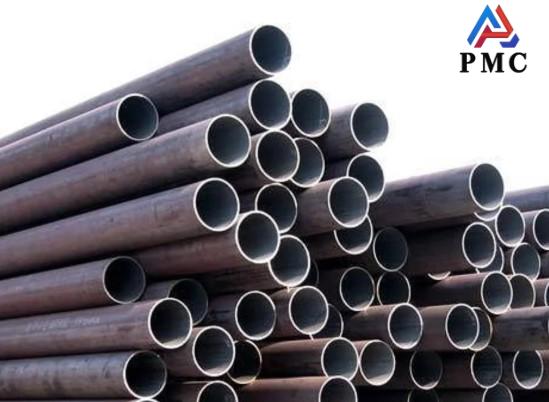
Structural Characteristics of Seamless Pipes
The most notable structural characteristic of seamless pipe is that it has no welds. This unique structure determines that its performance is essentially different from that of seamed steel pipe (welded steel pipe) and has irreplaceable advantages in many applications. This article carefully summarizes the structural characteristics and advantages of seamless pipe and compares them with the structural characteristics of seamed steel pipe.
Structural characteristics and advantages of seamless pipes
1. No welded seams
Core Features:
This is the fundamental characteristic of seamless pipe. It is manufactured through plastic processing methods such as piercing, rolling, drawing, or extrusion of a solid tube billet. The entire tube is formed in one piece, without any welded seams.
Advantages:
Higher structural integrity: Eliminates welds, a potential weak point. Welds are often the most vulnerable point for pipeline failures (e.g., cracking and leaks) due to potential defects such as stress concentration, coarse grains, inclusions, porosity, and lack of fusion.
Strong pressure bearing capacity: Since there is no stress concentration in the weld, the seamless pipe can withstand higher internal fluid pressure and perform more stably in high temperature and high pressure environments.
Uniform mechanical properties: The metallographic structure and mechanical properties (such as tensile strength, yield strength, and toughness) of the entire pipe body are more uniform and consistent, without uneven performance caused by the weld heat-affected zone (HAZ).
High reliability: Lower risk of failure, especially suitable for critical areas with extremely high requirements for safety and reliability.
2. Round or square hollow section
Versatility:
While the circular cross-section is the most widely used shape for steel pipes, seamless pipes are also available in a variety of special profiles, including square and rectangular tube forms. This range of shapes enhances their adaptability for different structural and engineering applications. The hollow interior of these tubes makes them highly efficient for transporting fluids, gases, and other materials, making them a preferred choice in industries such as construction, automotive, and fluid handling systems.
Advantages:
Lightweight: Compared to solid bars of the same strength, hollow structures significantly reduce weight and save material.
Efficient Transportation: Suitable for transporting various fluids, including oil, natural gas, water, coal gas, and steam.
Structural Efficiency: When subjected to complex loads such as torsion and bending, hollow structures offer higher torsional rigidity and bending strength than solid structures. Therefore, they are often used in structural components such as brackets and drive shafts.

3. Manufacturing process characteristics (determine its microstructure)
Plastic Processing:
The manufacturing process of seamless steel pipe involves plastic deformation of the steel at high temperatures (such as hot rolling) or at room temperature (such as cold drawing/cold rolling).
Advantages:
Dense Structure: Repeated rolling and drawing refine the steel's grain size, resulting in a denser structure and improved strength and toughness.
Controllable dimensional accuracy: Especially cold-drawn/cold-rolled precision seamless steel tubes can achieve extremely high dimensional accuracy and good internal and external surface finish, meeting the needs of mechanical manufacturing fields with high precision requirements.
Variety: Seamless pipes with various outer diameters and wall thickness combinations can be produced through different rolling and drawing processes as needed.
Structural comparison between seamless pipe and welded pipe
|
characteristics |
seamless steel pipe |
welded steel pipe |
|
structure |
no welded seams,one-piece molding |
one or more welded seams |
|
production |
solid tube billet is processed by piercing, rolling, drawing and other plastic processing |
made of steel plate/steel strip rolled and welded |
|
strength |
high overall strength and strong pressure bearing capacity |
Welds are weak links and have relatively low pressure bearing capacity (usually) |
|
uniformity |
more uniform material, structure and mechanical properties |
There may be differences in the properties of the weld area and the base material |
|
cost |
production costs are generally higher |
high production efficiency and generally low costs |
|
size |
produce small to extra large diameters (mainly through thermal expansion) |
It is easy to produce large diameter pipes, but it is complicated to produce small diameter thin wall pipes. |
|
application |
high temperature, high pressure, corrosive media, key structural parts |
medium and low pressure fluid transportation, general structural parts, large diameter pipelines |
Conclusion
In summary, the defining feature of seamless steel pipes lies in their seamless construction, which eliminates the need for welded joints. This core structural advantage significantly enhances their mechanical strength, pressure resistance, and overall reliability. Without the weaknesses commonly associated with welded seams, seamless steel pipes are capable of withstanding extreme operating conditions, including high pressure, high temperature, and corrosive environments. These qualities make them an essential and often irreplaceable choice in critical industrial applications such as oil and gas transmission, power generation, chemical processing, and high-performance mechanical systems. Their superior performance, durability, and safety standards ensure they meet the stringent demands of industries where failure is not an option.
Read more: API 5L Grade B Seamless Steel Pipe
- 【Prev】 : Carbon Steel Pipe vs Mild Steel Pipe
- 【Next】 : Seamless Steel Pipe for Tunnel


